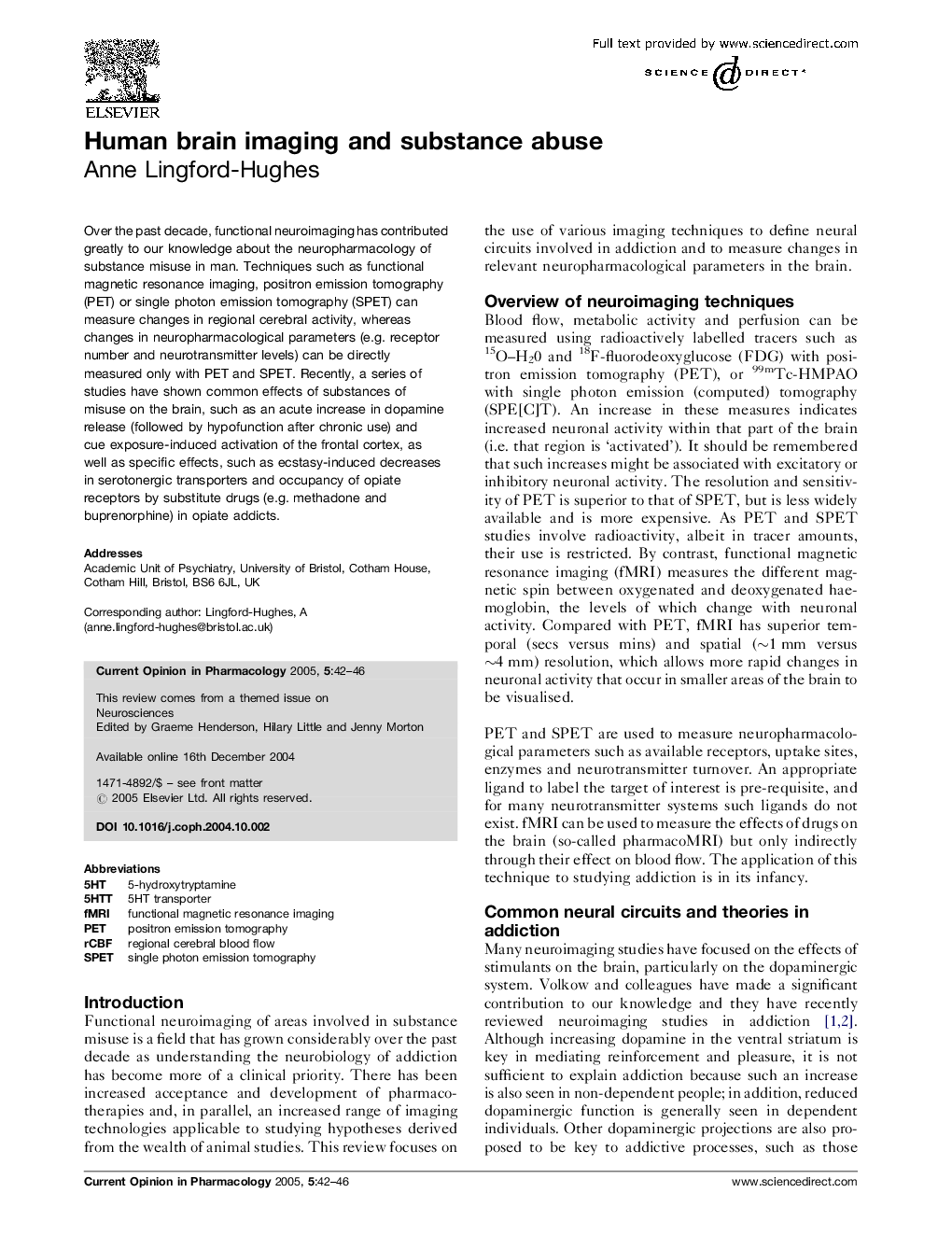| Article ID | Journal | Published Year | Pages | File Type |
|---|---|---|---|---|
| 9006546 | Current Opinion in Pharmacology | 2005 | 5 Pages |
Abstract
Over the past decade, functional neuroimaging has contributed greatly to our knowledge about the neuropharmacology of substance misuse in man. Techniques such as functional magnetic resonance imaging, positron emission tomography (PET) or single photon emission tomography (SPET) can measure changes in regional cerebral activity, whereas changes in neuropharmacological parameters (e.g. receptor number and neurotransmitter levels) can be directly measured only with PET and SPET. Recently, a series of studies have shown common effects of substances of misuse on the brain, such as an acute increase in dopamine release (followed by hypofunction after chronic use) and cue exposure-induced activation of the frontal cortex, as well as specific effects, such as ecstasy-induced decreases in serotonergic transporters and occupancy of opiate receptors by substitute drugs (e.g. methadone and buprenorphine) in opiate addicts.
Keywords
Related Topics
Life Sciences
Neuroscience
Cellular and Molecular Neuroscience
Authors
Anne Lingford-Hughes,
